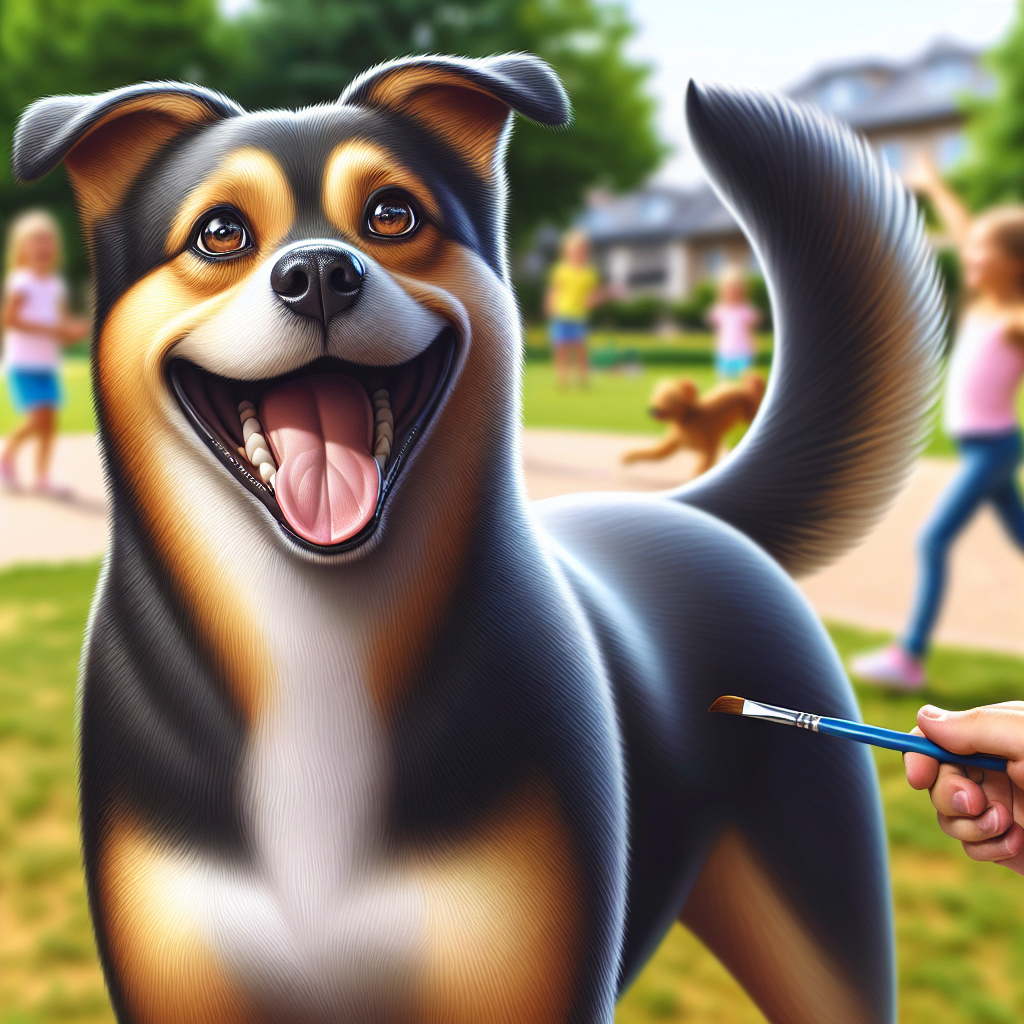Understanding the Flea Menace

Fleas. Those little jumpy bastards that don’t just make your dog itch—they make you itch to do something, anything, to get rid of them. You know the feeling. You see your dog going to town on a good scratch, and you think, “It’s just a scratch.” But then, another scratch. And another. Until it hits you—there’s a flea menace in dogs, and it’s your dog now. It ain’t just a scratch, folks. It’s a full-blown flea circus.
So, what do we do? First, let’s get to know these invaders. Fleas aren’t just nuisances. They can cause real harm—like allergic reactions and even anemia in severe cases. You gotta understand them to beat them. They’re not just hopping around aimlessly. Nope. These critters have a plan. They latch on, feed, and lay eggs. Fast. It’s like a military operation—minus the uniforms and medals. They’re sneaky, and that’s what makes ’em dangerous.
Identifying a Severe Flea Infestation
Now, how do you spot these troublemakers before they turn your house into Fleaville? Well, it starts with recognizing the signs of severe flea infestation. Your dog will probably give you hints—like constant scratching, biting, or even hair loss in patches. You may notice tiny black specks on their coat. That’s flea dirt, or as I like to call it, ‘flea poop.’ Gross, right? But it’s a dead giveaway.
Look closer, and you might see the fleas themselves. They’re small and quick, but they’re there. If you still need convincing, grab a fine-toothed comb and go through your dog’s fur. You’ll know when you’ve hit the jackpot. And remember, a flea infestation is not just on your dog—those little pests are now in your home. They lay eggs all over the place—carpets, bedding, you name it.
The Science of Flea Control
Let’s dive into the nitty-gritty—the science behind flea control. It’s not just about spraying and praying. There’s a method to the madness. Science shows us that fleas have a life cycle—egg, larva, pupa, adult. And to break this cycle, you need a multi-pronged approach. It’s like playing chess with bugs—think a few steps ahead.
First, you’ve got your topical treatments. These are like the frontline soldiers. They kill adult fleas on the dog. Then, you’ve got oral medications. These are the heavy artillery—knocking out fleas from the inside. And don’t forget about the environmental treatments—sprays and powders for your home. It’s not overkill—it’s necessary. Remember, those eggs and larvae are hiding in the shadows, waiting to make their debut.
First Steps to Combat Fleas
So, you’re ready to kick these fleas to the curb? Good. Let’s talk first steps to remove fleas. Start with your dog—get a flea comb and start combing. It’s simple, sure, but effective. You don’t need a degree to do it. Just patience. And maybe a good playlist to keep you company.
Next, it’s time for a bath. Use a flea shampoo—something gentle yet effective. Don’t rush it. Make sure the shampoo sits for a few minutes before rinsing. Then comes the drying part. Use a towel, not a hairdryer. You don’t want to scare the dog after all that.
After your dog is flea-free, tackle your home. Vacuum like you’re on a mission. Every nook and cranny. Wash your dog’s bedding in hot water. And consider using an environmental spray—something that targets eggs and larvae. It’s not just about treating the dog—it’s about creating a flea-free home, one step at a time.
Creating a Flea-Free Environment
Now, let’s talk about the long game—creating a flea-free environment. This ain’t a one-off battle—it’s a war. Consistency is key. And it starts with regular cleaning. Vacuum often. Not just when you see a flea. Wash your dog’s bedding weekly. And keep up with those flea treatments—don’t skip a month.
But it ain’t just about the inside. Take care of your yard too. Fleas love outdoor hangouts. Cut the grass, trim the bushes, and consider using a yard spray. It’s like giving fleas an eviction notice before they even move in.
And hey, don’t forget to check your dog regularly. You know the drill—look for fleas, flea dirt, and any signs of itching. Stay vigilant. Because at the end of the day, it’s about keeping your best buddy comfortable and healthy. And isn’t that what we all want?
Thanks for sticking around. Here’s hoping for a future where fleas are just a bad memory. Keep fighting the good fight, and may your days be itch-free.
Ditching Flea Friends: Manual Removal Tactics
Alright, let’s roll up our sleeves and dive into this flea tango. Treating a severe flea infestation on a dog can feel like a never-ending battle. You’re not just dealing with a dog; you’re dealing with a moving target that doesn’t sit still. Manual flea removal for dogs is where we start. Picture this: you, a trusty flea comb, and a dog that’s squirming like it’s got ants in its pants—except it’s fleas. You’re not just picking out fleas; you’re plotting their demise. It’s like a little bonding session, except with more scratching and less tail wagging. You’ve got to go through their fur like you’re searching for a hidden treasure, only this treasure is not the kind you want to find. Fleas, eggs, and dirt—oh my!
Flea-Busting Shampoos: The Bath Time Battle
Now, if you’ve ever tried to get a dog into a bathtub, you know it’s like herding cats, but imagine the payoff—flea massacre. That’s where the best flea shampoos for dogs come into play. They’re not just shampoos; they’re your secret weapon. Treating a severe flea infestation on a dog requires a good bath, and these shampoos are formulated to do more than just clean. They get down to business, stripping away the fleas’ grip on your pooch. It’s a circus act, sure, but when that flea shampoo starts working, it’s a massacre—those fleas never saw it coming. You’re not just giving a bath; you’re waging war. Scrub like you mean it, and remember, this ain’t no ordinary scrub-a-dub-dub.
Spot-On Treatments: The Liquid Armor
Enter the heroes of our story—spot-on flea treatments. These little tubes of liquid armor are like magic in a bottle. You learn how to apply spot-on flea treatments like a pro, parting fur and squeezing out the magic potion right between the shoulder blades. Treating a severe flea infestation on a dog? Check. It’s like gearing up your dog with a force field. The fleas take one taste and they’re out. It’s not just a treatment; it’s a declaration of war. You might as well hang a “no vacancy” sign on your dog. It’s a simple act, but it’s got power—liquid armor that keeps the buggers away.
Oral Medications: A Pill a Day Keeps the Fleas Away
Now, if your dog’s the type who doesn’t mind swallowing a pill, oral flea medications for dogs are your best friend. These aren’t your average pills; they’re the cavalry. Treating a severe flea infestation on a dog can seem daunting, but these pills pull their weight. It’s not gourmet, but it’s effective. Pop one in their mouth, and it gets to work from the inside out. You’re not just treating; you’re preventing. It’s like sending in the troops to clear the battlefield. And hey, that little pill may not be as fun as a treat, but it’s got the punch you need. Keep those bad boys stocked—because a pill a day, well, you know the rest.
Housekeeping for Fleas: Your Home Needs a Scrub Too
Now, onto the home front. You’re not just dealing with your dog; you’re dealing with a whole flea army. Flea control for home environments is as vital as treating the dog. Those fleas are sneaky; they love to hide in carpets, couches, and that cozy dog bed you thought was safe. Getting rid of fleas in your house is like spring cleaning on steroids. Treating a severe flea infestation on a dog means nothing if you don’t evict those fleas from your home. Vacuum like there’s no tomorrow. Wash everything that can be washed. If a flea can hide there, it will. You’re not just cleaning; you’re evicting an unwanted guest. It’s a scrub-down, top to bottom, and when you’re done, you’ll be the one sending the “wish you were here” postcard—straight to the trash.
So, there you have it, the great flea battle plan. It’s not for the faint of heart, but neither is dealing with a flea infestation. Your dog is worth the fight, and trust me, those little vampires won’t know what hit ’em. Thanks for sticking around, and may your flea war end in victory!
Home Remedies That Might Just Work
Alright, folks, let’s talk fleas. You know, those tiny little nuisances that make your dog’s life a living hell. So, you’re dealing with a severe flea infestation on your dog, huh? Well, first, take a deep breath. You’re not alone. Fleas love dogs—unfortunately, more than we’d like. Now, before you rush to the vet, let’s chat about some home remedies for flea infestation that might just work.
First up, give apple cider vinegar a shot. This stuff is like the Swiss army knife of home remedies. Mix a bit in with your dog’s drinking water—just a teaspoon per quart, nothing crazy. It’s supposed to make your dog’s skin less appetizing to fleas. And hey, if your dog drinks it without complaint, you’re already winning.
Next, we’ve got the good ol’ lemon bath. Squeeze those lemons like you’re making lemonade on a hot day. A lemon rinse might help repel fleas with its citrusy punch. Just remember not to get it in your dog’s eyes—unless you’re aiming for a dramatic scene.
And then there’s diatomaceous earth. Sounds fancy, right? But really, it’s just crushed-up fossils. Sprinkle it around your house, maybe on your dog’s bed. It dries out fleas like a desert in July. Just be careful not to inhale the stuff—unless you’re into hacking up a lung.
But listen, if these home remedies aren’t cutting it, don’t beat yourself up. Sometimes those fleas are just too damn stubborn. That’s when you might need to bring in the big guns.
When It’s Time for the Vet
So, when do you throw in the towel and call the vet? Well, if your dog looks like it’s starring in a horror movie—scratching, biting, losing fur—it’s time. When to see a vet for fleas isn’t always clear, but if your pup seems miserable or if the infestation’s out of control, don’t wait.
The vet’s got options. They can offer veterinarian flea treatment options that you just can’t get at home. Prescription meds that zap fleas faster than you can say “pest control.” Plus, the vet can check for secondary infections. You know, those nasty skin infections from too much scratching?
But don’t worry about being judged. Vets have seen it all. Your dog’s not the first to walk in covered in fleas, and they sure won’t be the last. Just remember, leaving it too long could mean more misery for your pup—and maybe a bigger bill for you.
The Cost of Freedom from Fleas
Speaking of bills, let’s talk cash. Treating a flea infestation isn’t always cheap. But hey, it’s the cost of freedom from fleas, right? You might think you’re just buying peace of mind, but really, you’re buying back your dog’s sanity.
Veterinarian treatments can range from 50 bucks to a couple hundred, depending on how bad things are. Add in any follow-ups, and you’re talking a small investment. But then again, what’s your sanity worth? And more importantly, what’s your dog’s comfort worth?
If you’re going the DIY route, those home remedies won’t break the bank. A bottle of apple cider vinegar costs less than a fancy coffee. Diatomaceous earth might cost a bit more, but it’s nothing compared to vet bills. Just keep an eye on your wallet, and remember, investing in your dog’s health is never wasted money.
Keeping the Buggers at Bay: Preventive Measures
Alright, now that you’ve tackled the infestation, let’s talk prevention. After all, you don’t want to go through this flea circus again, do you? Flea prevention tips for dogs are your new best friend.
First, keep your home clean. Regular vacuuming does wonders. Fleas love to hide in your carpet like tiny ninjas. And wash your dog’s bedding weekly. Hot water, folks, not a lukewarm rinse.
Consider a natural flea repellent for dogs. Essential oils like lavender or cedarwood can keep those buggers at bay. Just make sure it’s safe for your dog—some oils can be toxic. And regular flea treatments, whether from the vet or pet store, can keep your dog flea-free long-term.
And don’t forget about your yard. Fleas love to hang out in tall grass. Mow your lawn and keep it tidy. Trust me, it’s worth the effort.
A Flea-Free Future: Final Thoughts
So, there you have it. Treating a severe flea infestation on a dog isn’t easy, but with the right tools, you can get your home and your pup back to normal. Remember, whether you’re trying home remedies or heading to the vet, the goal is the same—peace for your dog and a flea-free future.
Here’s to hoping your days of flea battles are behind you. Keep those preventive measures in check, and you’ll reduce the risk of a repeat performance. Trust me, your dog will thank you, maybe with a wag of the tail or a sloppy kiss.
Thanks for sticking with me through this flea-ridden journey. Best of luck, and may your dog’s future be itch-free. Cheers!
Quick Takeaways:
Alright, let’s wrap this up, shall we? If you’re knee-deep in the flea menace with your dog, you’re not alone. Many pet owners find themselves in the trenches, battling these tiny tyrants. So, how do you treat a severe flea infestation on a dog? First off, you gotta know the signs. Watch out for relentless scratching, red patches, or even hair loss. Fleas are sneaky; they don’t just hang out on your dog. They love your home, too—couches, carpets, you name it.
Now, what’s the science behind flea control, you ask? It’s about breaking the life cycle. Fleas lay eggs, those eggs hatch, and boom—more fleas. So, your first step is to remove fleas from your dog. Get hands-on with some manual flea removal. A fine-tooth comb should do the trick. Then, grab the best flea shampoos for dogs and give your pooch a good scrub. Don’t forget those spot-on treatments. They’re like a shield against future invasions.
But wait, there’s more! Oral flea medications for dogs work wonders. They go right into your pup’s bloodstream, making it a no-go zone for fleas. And don’t ignore your home. You gotta clean like you’re expecting company. Vacuum, wash, and maybe even call in the pros for some flea control for home environments. Remember, getting rid of fleas in your house is just as crucial as treating your dog.
FAQs:
1.
How do you treat a severe flea infestation on a dog?
Start by identifying dog fleas. Look for tiny, fast-moving specks on your dog’s skin. Once you know what’s up, focus on manual removal using a flea comb. Use flea shampoos for a thorough clean. Spot-on treatments and oral medications will help keep those pests away. Lastly, don’t forget the home front—clean your house to stop fleas from coming back.
2.
What are the signs of a severe flea infestation?
If your dog is scratching like there’s no tomorrow, that’s a big hint. You might also notice red bumps or even bald spots. Flea dirt, which looks like tiny black specks, is another telltale sign. Keep an eye out for these signs to catch a flea problem early.
3.
How can I create a flea-free home?
Getting rid of fleas in your house involves some elbow grease. Vacuum floors, carpets, and furniture regularly. Wash your dog’s bedding in hot water. Consider using flea sprays or foggers if the infestation is bad. And if all else fails, a professional pest control service might be your best bet.
4.
Are there natural flea repellent options for dogs?
Sure thing! Some folks swear by natural remedies like apple cider vinegar or essential oils like lavender and peppermint. Just remember, not all natural remedies are safe for dogs, so do your homework. Always test a small area first or consult your vet.
5.
When should you see a vet for fleas?
If over-the-counter treatments aren’t cutting it, or if your dog’s skin looks irritated or infected, it’s time to call in the pros. A vet can offer stronger flea treatments and check for any related health issues. Better safe than sorry, right?
Conclusion:
So, there you have it. How do you treat a severe flea infestation on a dog? It’s all about getting to know your enemy—and then kicking them to the curb. Start with your dog. Use manual removal, shampoos, and spot-on treatments. Oral meds are a nice touch, too. Then, turn your attention to your home. Clean like you’ve never cleaned before. A flea-free home is a happy home, after all.
Remember, this isn’t a one-time deal. Flea prevention is a long-term game. Regular checks, consistent cleaning, and maybe a sprinkle of natural remedies to keep the peace. Take a breath. You’ve got this. Your dog has your back, and you’ve got theirs. Thanks for hanging out with me through this flea-fighting saga. Here’s to scratching out those pesky pests for good!
References:
1. [PetMD – How to Handle Fleas on Dogs](https://www.petmd.com/dog/general-health/how-to-handle-fleas-on-dogs)
2. [WebMD – Remove Fleas from Pet](https://www.webmd.com/pets/remove-fleas-from-pet)
3. [Healthline – How to Get Rid of Fleas](https://www.healthline.com/health/healthy-home-guide/how-to-get-rid-of-fleas)
4. [RSPCA – Advice on Fleas](https://www.rspca.org.uk/adviceandwelfare/pets/general/fleas)
5. [Better Health Channel – Fleas](https://www.betterhealth.vic.gov.au/health/conditionsandtreatments/fleas)
Our solution eradicates fleas on contact without harmful chemicals, ensuring a safe environment for your pets and family. Easy to use and highly effective, SayByeBugs helps you maintain a flea-free home. Learn more and order today at SayByeBugs.com
Our solution eradicates fleas on contact without harmful chemicals, ensuring a safe environment for your pets and family. Easy to use and highly effective, SayByeBugs helps you maintain a flea-free home. Learn more and order today at SayByeBugs.com








